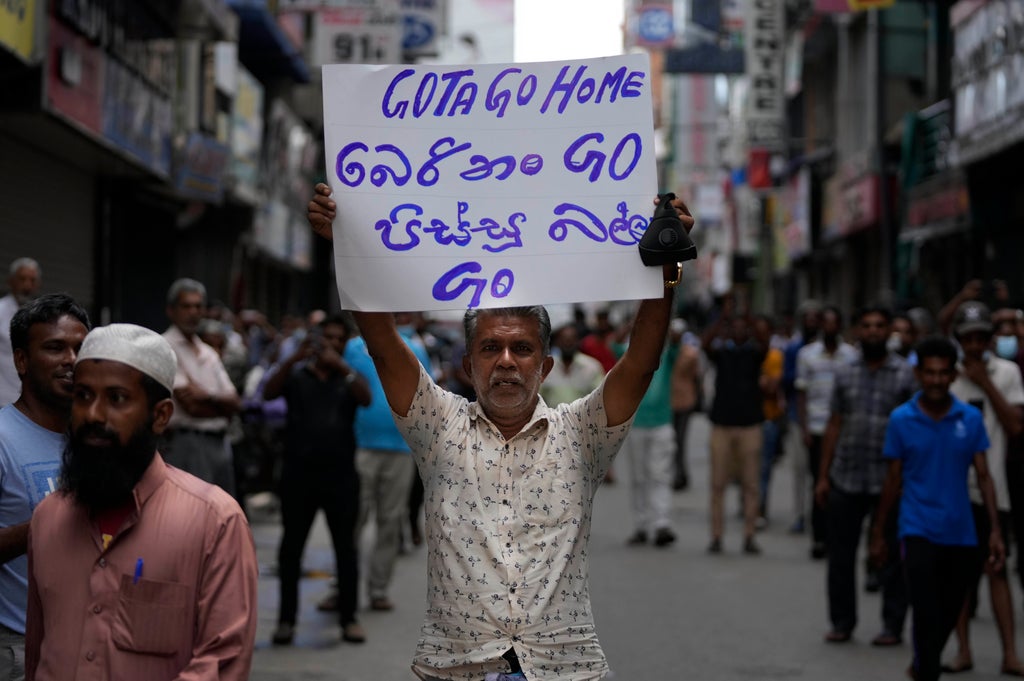
Businesses were closed, teachers absent and public transportation interrupted as Sri Lankans heeded a call for a general strike Thursday to pressure the president to step down over a growing economic and political crisis.
Business districts in the capital, Colombo, were closed, and bankers, teachers and other professionals held parades and joined the main protest site opposite the president’s office where demonstrators have gathered for weeks. Doctors and nurses have said they will support the strike with demonstrations during their lunch break.
Sri Lanka is on the verge of bankruptcy with huge foreign debts and a lack of foreign currency, causing shortages of imported essential goods like fuel and food.
Protesters who have crowded the streets since March 31 hold President Gotabaya Rajapaksa and his family — who have dominated nearly every aspect of life in Sri Lanka for most of the last 20 years — responsible for the crisis.
Sri Lanka earlier suspended repayment on its foreign debts, $7 billion of which was due this year. It has foreign reserves of less than $1 billion, depleting available foreign currency. The resulting shortages of imported essentials like fuel, cooking gas, medicine and milk left people standing in lines for hours to buy limited stock.
Government officials have blamed Russia’s war in Ukraine and the coronavirus pandemic for the debt crisis and say they have been discussing rescue plans and loan repayment with the International Monetary Fund, Chinese officials and others.
Rajapaksa reshuffled his Cabinet and offered a unity government in an attempt to quell protests, but opposition parties refused to be part of a government headed by the Rajapaksa brothers. The weak, divided opposition has been unable to show a majority and take control of Parliament on its own.







